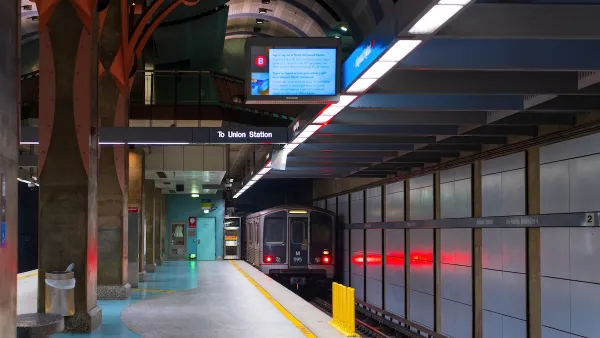Ever wonder why Los Angeles looks the way it does? Jeremy Rosenberg examines 1908's Residence District Ordinance as one of the principal culprits in the newest addition to the "Laws That Shaped L.A." series.
A common misconception has it that Los Angeles is an "unplanned" city. To disprove this, one must look no further than any of the dozens of influential architectural and development histories written about the city, the forthcoming book Planning Los Angeles, or to the Residence District Ordinance (RDO) adopted by the Los Angeles City Council in 1908.
In fact Los Angeles has been a land use and planning pioneer, as the RDO can attest: "'Los Angeles was one of the first large cities in the U.S. to adopt a kind of modern zoning to keep the industrial away from the residential,'" [Occidental College professor Mark] Vallianatos says. Indeed, the Residence District Ordinance is sometimes credited as being the nation's first such broad land use edict," notes Rosenberg.
While the ordinance cannot be entirely blamed for the sprawl that characterizes the contemporary city, it certainly contributed to the horizontal growth that followed. Speculating about the form of Los Angeles without the segregating effects of the single-use zoning ordinance, which of course became commonplace across the country, Vallianatos sees a denser city.
"If the city would have more mixed use, with people living closer to retail and workplaces, Los Angeles would feel like another city, with less of its land area dedicated to low density, single family residential neighborhoods, and more streets with shops and businesses on the ground floor and homes above."
FULL STORY: The Roots of Sprawl: Why We Don't Live Where We Work

Maui's Vacation Rental Debate Turns Ugly
Verbal attacks, misinformation campaigns and fistfights plague a high-stakes debate to convert thousands of vacation rentals into long-term housing.

Planetizen Federal Action Tracker
A weekly monitor of how Trump’s orders and actions are impacting planners and planning in America.

San Francisco Suspends Traffic Calming Amidst Record Deaths
Citing “a challenging fiscal landscape,” the city will cease the program on the heels of 42 traffic deaths, including 24 pedestrians.

Defunct Pittsburgh Power Plant to Become Residential Tower
A decommissioned steam heat plant will be redeveloped into almost 100 affordable housing units.

Trump Prompts Restructuring of Transportation Research Board in “Unprecedented Overreach”
The TRB has eliminated more than half of its committees including those focused on climate, equity, and cities.

Amtrak Rolls Out New Orleans to Alabama “Mardi Gras” Train
The new service will operate morning and evening departures between Mobile and New Orleans.
Urban Design for Planners 1: Software Tools
This six-course series explores essential urban design concepts using open source software and equips planners with the tools they need to participate fully in the urban design process.
Planning for Universal Design
Learn the tools for implementing Universal Design in planning regulations.
Heyer Gruel & Associates PA
JM Goldson LLC
Custer County Colorado
City of Camden Redevelopment Agency
City of Astoria
Transportation Research & Education Center (TREC) at Portland State University
Jefferson Parish Government
Camden Redevelopment Agency
City of Claremont





























